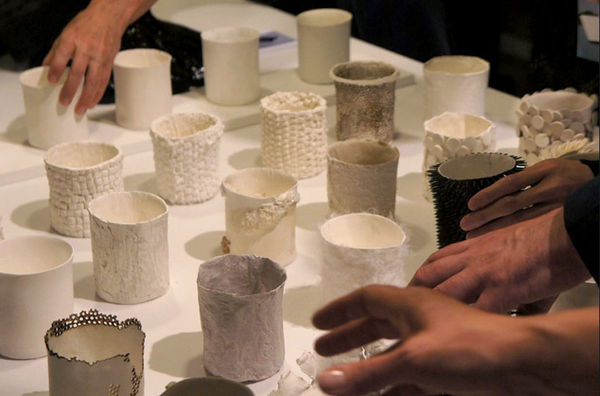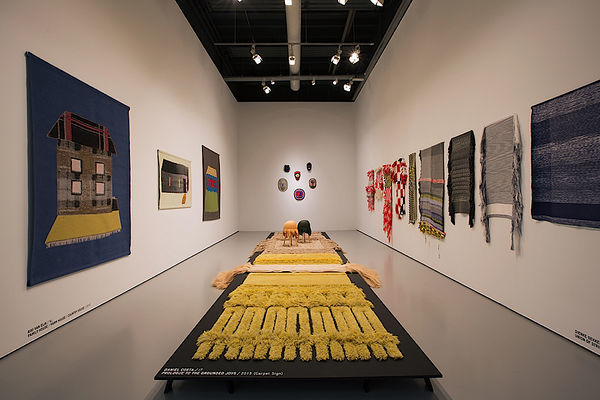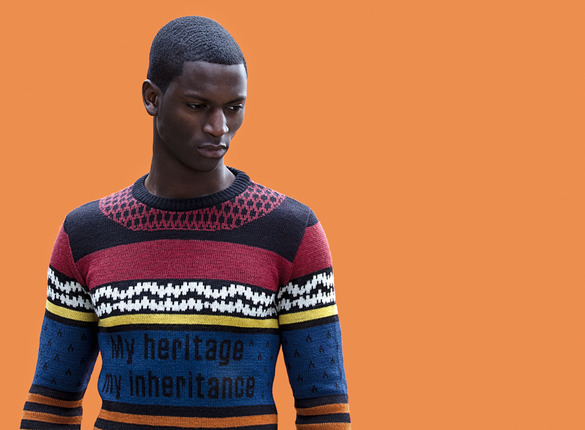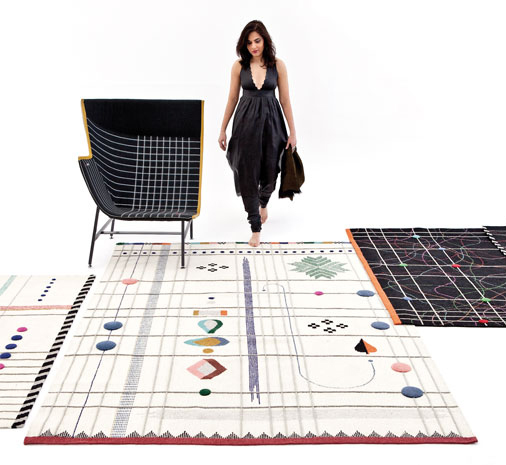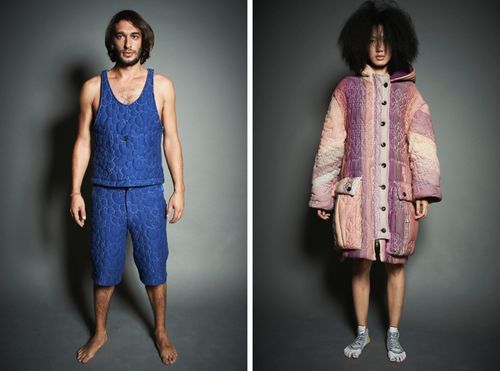User:Dionne/Written Assignment
Dionne Wolff Digital Craft Essay 0854018
Herkansing
As a ‘Lifestyle Designer’ it is of interest to map individuals, cultures or sub-cultures in terms of style. The ‘daily life’ is an important factor that is constantly being questioned. Lifestyle is a term that defines, creates, communicates, influences and preserve identity. Within this I developed my craft in designing surfaces that elaborate on a certain experience that reconnect people. This is made with both digital and analog techniques, namely through textile materials. Surface design to me is an experience that change and enhance the ambience of an environment or object. An experience that evokes a new kind of relation to its user. Color, tactility, construction and pattern formation are important characteristics of a surface. Surface Design is present across a broad range of design-based subject areas like Fashion, Interior, Product Design and Architecture. My work cannot yet be placed in one of these areas. For the future I hope to design surfaces for all these different areas, because they are all connected with each other in some way. I get a lot of inspiration from architecture, nature, cultures/tribes and traditions. Through my Internship at Sparkel Creative Group, I learned how to make art works for packaging design. I found out that I wanted something more than only flat surfaces, I was longing for more sensibility and tactility in my designs. But also in my working process, which is mainly behind a computer. The way I use a computer interface is lacking sensibility in my opinion. I have experiences with digital software like Illustrator, Indesign and Photoshop and using the laser cut machine. During my exchange with Manchester School of Art I followed the course Textiles in Practice. This gave me insight in making digital prints printed on fabric and screen printing on fabrics. I also discovered how to create textures with the embellish machine, to make my work more tangible. What I liked about it was that I was not only working behind my computer, but was really making something by using my hands. I was working both analogue and digital. It gave me a lot of new inspiration. I am still developing and exploring my role as a lifestyle designer, and my contribution to the future, but what I do know is that tactility is a term I find very important, especially in the digital world we live in now.
Nowadays there is less interaction between people in reality. Although on their social media platforms there is a lot going on. People tend to have a bigger connection with their mobile devices than with people in their surroundings. I even catch myself looking at my phone with every step I take, and it makes me wonder if this is effecting my humanity. The question ‘how can material experiences reconnect people with tactility in our digitized lives?’ was asked by Marie Rouillon for her project ‘Daily Haptics Cups’. Originally Marie is a textile designer, but developed in a material designer. She created new tactile experiences in order to reconnect us with everyday routines. This project makes you question sensory ability. Technically they are all cups but they look and feel different. Therefore they are responding to contemporary society’s digitization. It aims to re-engage people with tactile, material experiences. Which is something I would like to accomplish with my project too. This collection encourages the idea that visual information alone is not enough, you have to touch the cups to get full information. This way the user is invited to rethink his tactile habits on a daily basis. Over time human actions are being replaced by machines. Everything is being done for us. Our senses are being less stimulated and the eye has become the number one sense to register. I think that it is important that we need to trigger our senses more. Because the interactions that we do have with our digital devices are lacking tactility and sensory experiences. Interactivity and a more extended investigation of the senses include touch, sound and smell. Creating surfaces with textiles will evoke the sense not only to look but also to touch. A touch can evoke a certain relation that people can hold on too.
Daily Haptics Cups by Marie Rouillon
In 2013 at the TextielMuseum in Tilburg, Lidewij Edelkoort explains that Talking Textiles (exhibition) will expand our perception of where textiles can take us: “After a reaction to the increasingly digital landscape of our lives, a craving for tactility and dimension has led designers to reconsider the role of fabrics once more. The near future will see the overwhelming return of textiles in our interiors, covering floors, walls and furniture in an expansive and personal manner. These textiles will speak loud and clear to become the fabrics of life, narrating stories, designing pattern, promoting well-being and reviving the act of weaving.” I find it interesting that Edelkoort is telling that although we live in this digital landscape, we will crave for more tactility and more sensibility. That’s why I think analogue and digital should be blend together. I am curious how textile surfaces will shape our future in Fashion, Interior and Architectural contexts.
Talking Textiles exhibition in Textile Museum
Laduma Ngxokolo is a knitwear designer with his label MaXhosa, and is inspired by the Xhosa, one of the South African dominant ethnic group. His latest collections captures the beauty of being truly African and proud in a modern context that seeks an eternal way of communicating culture through fashion. This makes his designs very human and less digital. What I like about his collection is that it has a story. It is dedicated to his mother, who taught him how to hand-machine knit and was a great patron of the Xhosa heritage.
My Heritage, My Inheritance by MaXhosa
Another designer that is inspired by her own roots is Nipa Doshi, from the brand Doshi Levien. She created a series of rugs that evoke the sensual and shiny world of tribal folk embroidery of India. Hand crafted embroideries made by Nomadic community of the Rabaris. She had a memory of the embroidery workshop of her aunt. Women sat together on rugs surrounded by jewel like elements that scattered around them as they work. This hands-on working process was her biggest inspiration for this collection.
Rabari Collection by Nipa Doshi
Materials change design, you can find inspiration in materials that suggest new functions. Their context is changed which means the outcome is an innovative reinvention. Borre Akkersdijk experiments with the function of materials and gives new meanings to them. For example, on a circular knitting machine he directly knits the fillings of the clothes instead of adding it afterwards. He calls this new technique 3D-knitting. He got this idea from the mattress industry, where this was done before, but never with clothes. He had to adjust the technique because otherwise the fillings would fall out after cutting the fabric, and therefore he had discovered a new technique. This is something that inspires me: creating new technical solutions with a different way of using materials. In the context of surface design. A surface that invites to touch, a new meaning to the material and a more hands-on approach by the user.
First Cycle Collection by Borre Akkersdijk
The process of making a textile print can be very hands on. Hand painting or screen printing is one of them. But using digital software is unfortunately not always that exciting. The software is doing it for us. For example, the well known filters are copying human crafts that we once invented, only in a much faster way. I find it interesting when those two worlds are being blend together and benefit each other. Something that is exciting to work with but on the same level and speed as a digital production. Searching for the balance between analogue and digital is something I want to explore in future projects.
